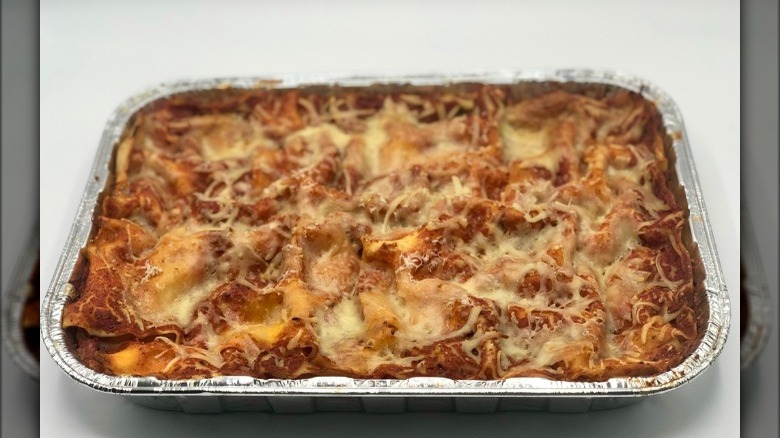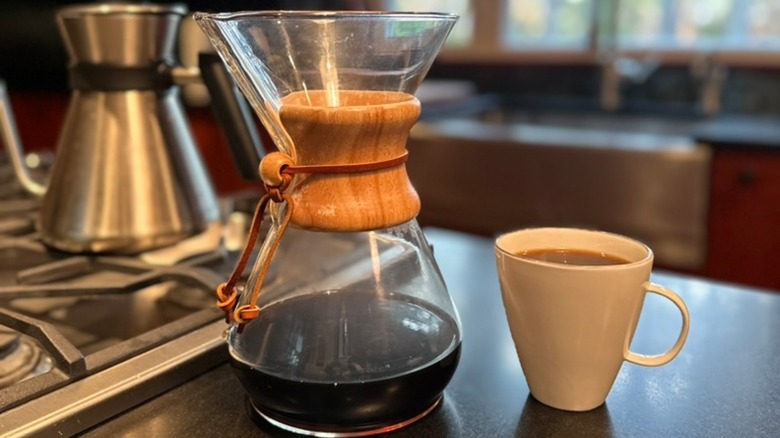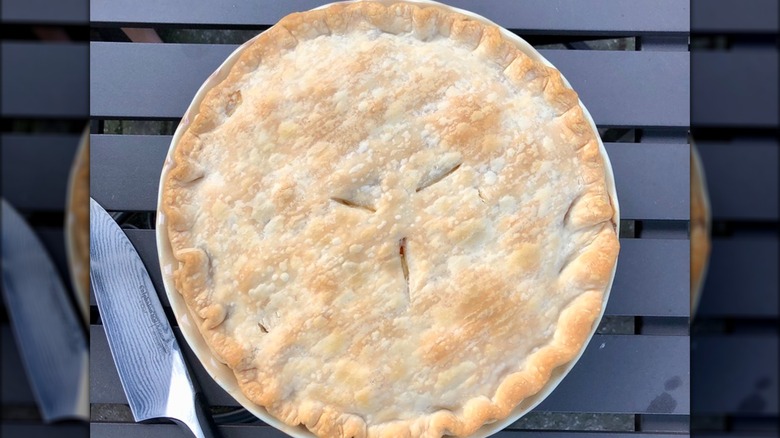3 Cooking Tips I Learned From Lessons In Chemistry
As someone who loves to eat and cook, I'm drawn to shows centered around cooking. Not reality TV competitions, which make me cringe, but dramas like Jon Favreau's "Chef." This year, I loved the second season of "The Bear" and eagerly await the next "Lessons in Chemistry" episode on Apple TV. The drama centers around scientist Elizabeth Zott (played by Brie Larson) trying to break through in a misogynistic field during the 1950s and explores the fascinating connection between science and cooking.
I'm easily influenced while watching a program and often stop to prepare what the actors are enjoying on screen; I baked lots of scones for "Downton Abbey." Although Zott's character is unrelatable in many ways, I'm drawn to her passion and scientific approach to cooking. I found myself craving the dishes she prepared on screen, which happened to be some of my favorites.
Aside from baking, it's rare that I rely on a recipe when cooking. As I become a better cook, I use them as a jumping-off point, but I use my experience and growing knowledge of food chemistry, like Zott, to correct my mistakes so I'm not tethered to a recipe. Curious if Zott's recipes could improve the same dishes I've made on repeat for decades, I began testing her recipes after they aired.
Lasagna is better with bechamel
Although lasagna is just a fancy casserole, it's a labor of love and more time-consuming than throwing everything into one pan. Each component must be independently delicious and balance the other ingredients to create that complex, creamy bite we crave. Zott's recipe from "Lessons in Chemistry," which she made 78 times to perfect, combines the traditional Southern Italian preparation with how it's made in the North. Purists may say that's blasphemy, but I think it's genius.
Being from Southern Italy, the lasagna I grew up eating was layered with ricotta and topped with mozzarella, typical of the region. Northern Italians use bechamel and Parmigiano Reggiano, which adds a silkiness to the dish that ricotta can't duplicate. While this is a family favorite, lasagna isn't a dish I typically order at a restaurant, so I didn't realize what my version was missing until I tried Zott's recipe.
Ricotta can have a texture similar to cottage cheese when cooked. Zott combines it with bechamel sauce, which contains a thickening agent (flour), so the ricotta doesn't curdle. Her hybrid recipe creates a smooth, homogenous layer throughout the dish that's absolutely worth the additional 15 minutes needed to make the sauce. Bechamel is delicious on its own, but when mixed with ricotta, it's more luscious. These changes definitely improved my family recipe and how I plan to make Sunday night lasagna moving forward.
Making the switch to pour-over coffee
After watching Zott prepare coffee in a beaker with a Bunsen burner, I wondered if taking ten extra minutes in the morning to treat myself to a better-tasting coffee was worth the effort. I enjoy waking up to the smell of brewed coffee, but I love how French press coffee tastes at the occasional brunch. While I take the time to grind my beans, I set a timer the night before so my coffee awaits me, not vice versa. I have resisted pour-over coffee out of sheer laziness.
Like the high-end cafes and coffee snobs, I ordered a Chemex coffeemaker to mimic how Zott prepared coffee in the lab (minus the Bunsen burner). It slows the process, extracting the maximum flavor from the beans to produce a full-bodied cup without bitterness. Slowing down is definitely where I struggle, but there is no denying that my Chemex made a better cup of coffee in less time than I expected.
It took a week of experimenting with the grind size, the ratio of coffee to water, water temperature, and how quickly I poured the water to determine I needed less than five minutes (once the water boiled) to make delicious black coffee. If you love the taste of coffee without needing sugar, cream, and other flavorings, then I think this method is worth the time; although I'm keeping my automatic drip for the mornings I need caffeine, STAT.
The secret to chicken pot pie requires planning ahead
Chicken pot pie is one of the first dishes I make when the weather turns cold. With a lot of experience preparing and eating chicken pot pie, I was eager to learn something new from Zott to improve one of my favorite comfort meals.
While I'm oddly flattered that our recipes are almost identical (I add a little sherry to the filling), Zott's recipe prepares the filling a day in advance. This extra step allows the flavors to develop overnight, tasting even better when it's served the next day. As Zott mentioned on the show, the aromatics continue to react with the chicken and cream sauce in the refrigerator, marrying and becoming a complex dish rather than a medley of individual flavors. Scientifically, allowing the proteins and starches to cool and reheat traps the flavor compounds (taste, aroma, and mouthfeel), making the dish tastier and the meat more tender.
It's a bonus that this technique also makes weekday meal prep easier, although the additional lesson in patience isn't lost on me. With my pot pie filling made a day earlier (and store-bought pie dough), I prepared this hearty dish in the same amount of time it took the oven to preheat. Zott was right; The dish is more flavorful. This is a game changer for soups, stews, and Sunday gravy meat, which I should consider making on Saturdays now.




